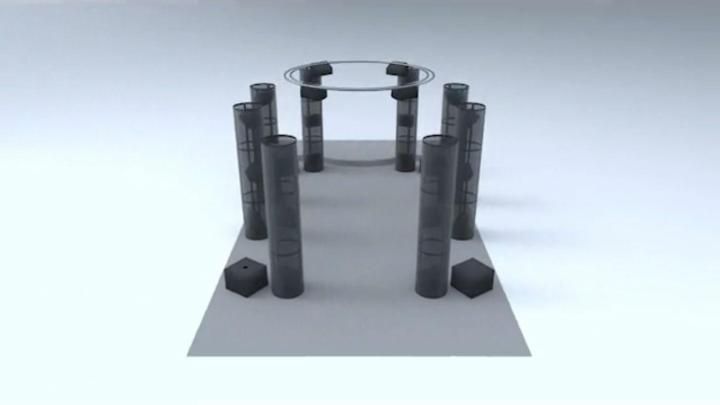
Envelop, which is in the midst of a Kickstarter project to install the sound system, has both the infrastructure and the software to make this a reality.
“If you’re a performer and you’re using Ableton Live with a multi-track composition, you can take an track and place it anywhere in the space, and apply special effects to it,” said co-developer (and Facebook data scientist) Roddy Lindsay (via TechCrunch).

The foundation of the project is Ambisonics, “a proven open source sound mapping technology that has flourished in academic settings (such as Stanford’s Center for Computer Research in Music and Acoustics),” according to the statement on their Kickstarter.
“With Ambisonics, artists determine a virtual location in space where they want to place a sound source, and the source is then rendered within a spherical array of speakers. Rather than positioning sounds to different locations around the room based on speaker locations (as with conventional surround sound techniques), sounds are digitally mapped to different locations using x,y,z coordinates.”
The nightclub prototype, which will be housed inside a new San Francisco entertainment complex called The Midway, hopes to open this summer. They anticipate using the space not just as a performance venue (for electronic music performances and independent film screenings) but also for educational workshops and music psychology-related research.
In short, this futuristic sound engineering gives artists the ability to create an immersive ‘audio virtual reality’ where they can control not just the sounds being played, but where they’re being heard in the room. It sounds like an audio geek’s dream venue to us, and for that we’re excited.

Editors' Recommendations
- What is spatial audio? The 3D sound experience fully explained
- LG’s 2022 soundbars start at $400, pump out hi-res audio and 3D sound
- Yamaha’s new 3D ANC headphones take aim at the AirPods Max
- Definitive’s Studio 3D Mini Sound Bar delivers Dolby Atmos in a tiny package
- CES 2020 audio predictions: Expect more noise-canceling headphones and 3D music


